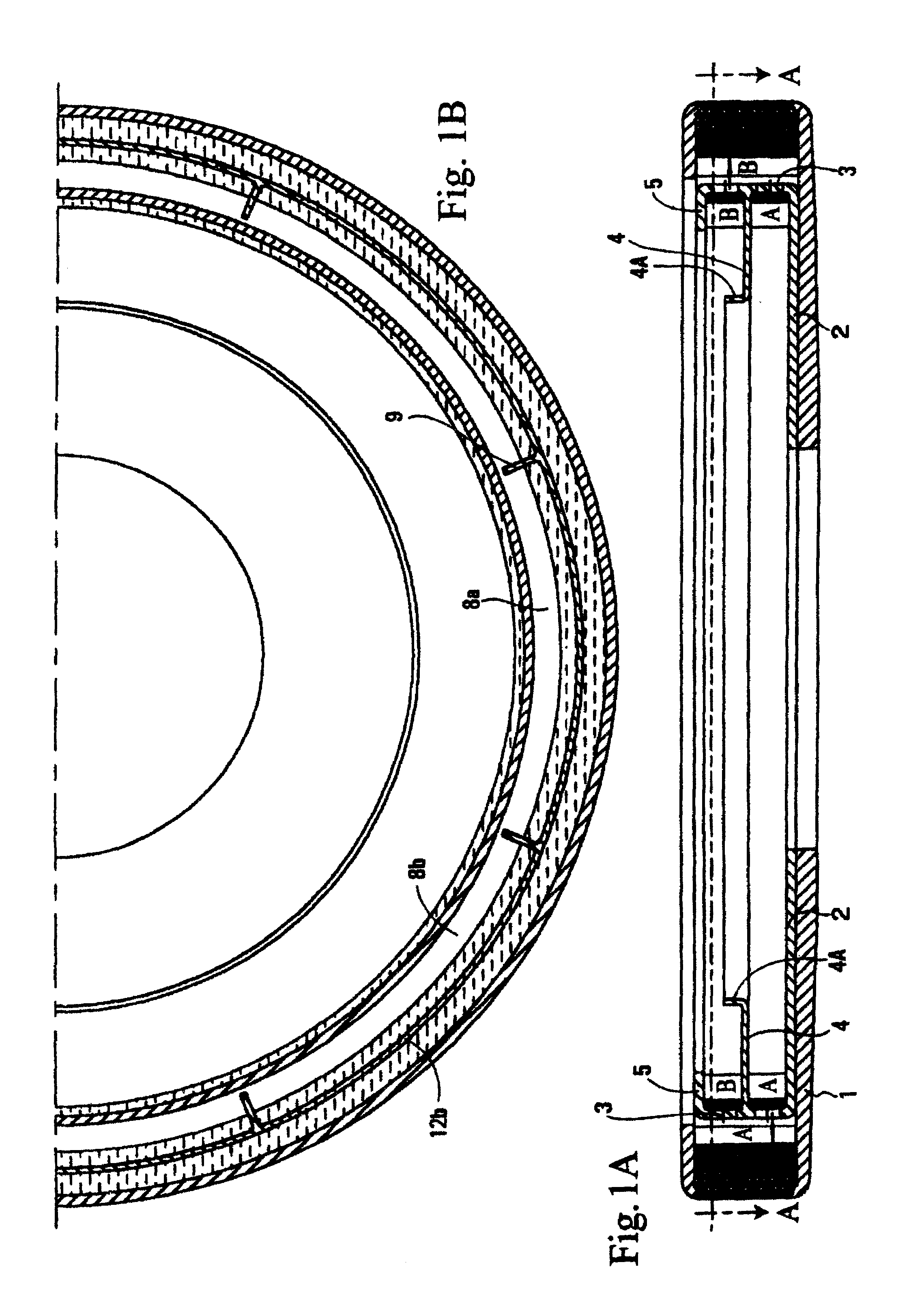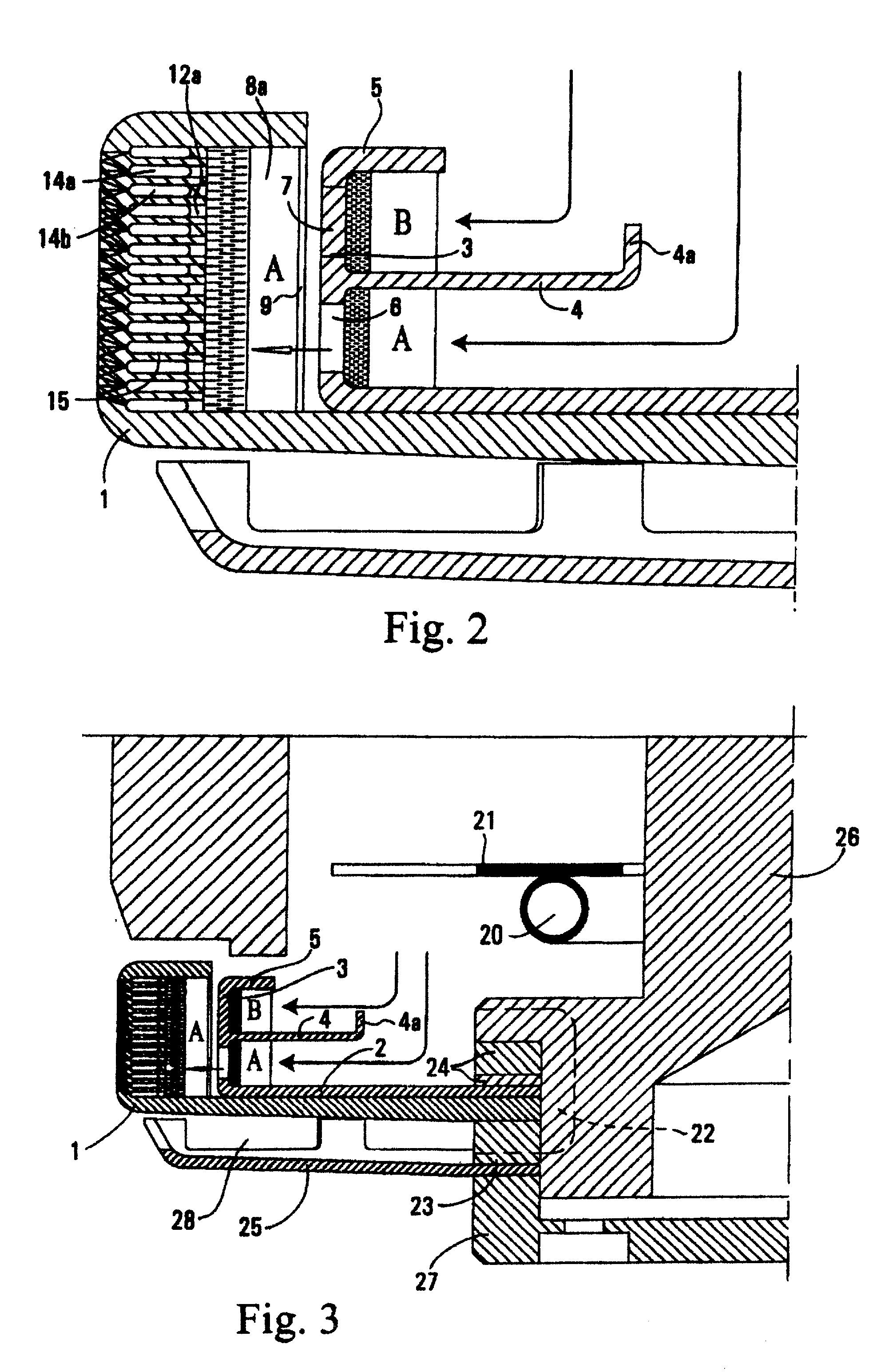High throughput capacity spinner for manufacturing dual-component curly fibers
a technology of curly fibers and spinners, which is applied in auxillary shaping apparatus, lighting and heating apparatus, furnace types, etc., can solve the problems of ineffective rotary fiber forming process, unsuitable thick and long fibres for insulating products, and inability to effectively compete with non-rotary fiber forming processes. achieve better thickness recovery, improve volume filling ability, and improve compression ratio
- Summary
- Abstract
- Description
- Claims
- Application Information
AI Technical Summary
Benefits of technology
Problems solved by technology
Method used
Image
Examples
Embodiment Construction
[0031]FIG. 1A is a transverse cross section of a spinner used to produce glass fibers through centrifugal force, heat, and air pressure. The spinner 1 is basically a round dish having a peripheral circumference with holes drilled therein. The spinner has an upper top side flange but otherwise has an open top which permits molten glass to enter into the spinner and be forced to the circumference. In FIG. 1A there is mounted within the spinner a slinger cup 2. The slinger cup is fixedly mounted within the spinner. It has a peripheral wall or rim 3, a slinger cup middle flange 4, and a middle flange upturned member 4A. The slinger cup also has a top flange 5. The purpose of the slinger cup is to separate two molten glasses A and B. Molten glass B is directed into the slinger cup on top of the middle flange 4 whereas molten glass A falls inside the spinner 1 inwardly of the slinger cup middle flange upturned member 4A.
[0032]On examination of FIGS. 1A and 2, one views that a molten strea...
PUM
| Property | Measurement | Unit |
|---|---|---|
| angle | aaaaa | aaaaa |
| angle | aaaaa | aaaaa |
| angle | aaaaa | aaaaa |
Abstract
Description
Claims
Application Information
 Login to View More
Login to View More - R&D
- Intellectual Property
- Life Sciences
- Materials
- Tech Scout
- Unparalleled Data Quality
- Higher Quality Content
- 60% Fewer Hallucinations
Browse by: Latest US Patents, China's latest patents, Technical Efficacy Thesaurus, Application Domain, Technology Topic, Popular Technical Reports.
© 2025 PatSnap. All rights reserved.Legal|Privacy policy|Modern Slavery Act Transparency Statement|Sitemap|About US| Contact US: help@patsnap.com



